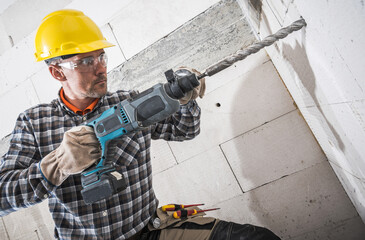If you’re having difficulty finding the right contractors to handle your project, you may need to consider concrete repair. Concrete repair is a common practice that involves altering the foundation to fix problems caused by uneven concrete surfaces. This process involves leveling the concrete surface. It is an effective method of restoring your home’s foundation and curb appeal. Moreover, concrete repair is affordable, and many homeowners prefer it to replace a damaged foundation.
 Major defects require different preparation and artistry than minor defects. Often, they require expert analysis and a documented repair procedure. You can’t rely on an experienced forecaster to make a perfect piece every time, so your concrete contractors must take the time to find the root cause of the problem and correct it. A quality repair should not compromise aesthetics or structural life. When a problem is too extensive to fix, it may be necessary to replace the entire surface.
Major defects require different preparation and artistry than minor defects. Often, they require expert analysis and a documented repair procedure. You can’t rely on an experienced forecaster to make a perfect piece every time, so your concrete contractors must take the time to find the root cause of the problem and correct it. A quality repair should not compromise aesthetics or structural life. When a problem is too extensive to fix, it may be necessary to replace the entire surface.
To avoid failure, it is essential to follow proper preparation methods before you begin any concrete repair work. To prepare the area, you must first remove crumbling areas and debris. Small cracks can be removed with a heavy-duty trowel, while larger areas can be removed using a cold chisel and sled. Make sure to sweep and vacuum the area completely and hose down the area to a solid base.
The next step in a concrete repair project is to evaluate the problem. Some defects may be minor, while others may be severe. The goal of repair is to minimize the differential shrinkage of the repaired concrete and the original concrete. Following the right procedures and applying the new concrete carefully is essential to become a seamless part of the product. This process will reduce the chance of cracks and delaminations. You will also need to ensure that the area is clean and moist before applying the repair material.
Choosing the right materials for your project is essential; the right repair material can minimize downtime. The location of the repair will affect the procedures and materials to be used. Some locations limit the use of certain equipment, and some repair materials are combustible, odorous, and toxic. If the repair will be exposed to heavy traffic, it is important to choose materials with high strength ratings and good abrasion and skid resistance.
There are many different ways to repair damaged concrete. One way is to use new concrete to fill in cracks. However, for the repair concrete to be successful, it must make an integral bond with the base concrete. For this, it is important to use a concrete mixture that contains a low water-cement ratio and a high percentage of coarse aggregate. If the concrete is not reinforced enough, replacement is necessary. Concrete replacement is the best option if you have active deterioration or a large area of honeycombing.
When performing concrete repairs, you must consider the depth and orientation of the damage. Thicker sections may experience thermal stress due to the application of thicker repair materials. Overlay and patches that are too thin may result in cracks or spalling. When using polymer materials for concrete repairs, you must consider the material’s coefficient of thermal expansion. Choosing a repair material that will not cause shrinkage or cracking is also important. It should also be bonded with the concrete to avoid future problems.
The next step in concrete repair involves choosing the right type of mortar for the project. The type of mortar used depends on the severity of the damage. The mortar should have a modulus similar to the concrete substrate for structural repairs. On the other hand, nonstructural repairs may benefit from a low modulus. In addition to bond strength, repair mortar should have properties such as low shrinkage compensation to minimize the cracking after placement. Further, you may consider factors such as water vapor transmission and abrasion resistance. Finally, you may want to consider how well the surface has been prepared before installing the repair.
Thankfully, there are some steps you can take yourself to avoid costly concrete repair. Firstly, you should take note of any stains on the concrete. These can indicate that it’s time for concrete repair. The stains on the concrete surface may indicate a problem, as they can penetrate through the porous, absorbent material. Simple stains can be removed with a simple wash, while difficult stains may require different cleaning techniques. Old oil stains, for instance, can be removed using acetone and amyl acetate.